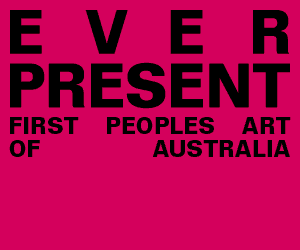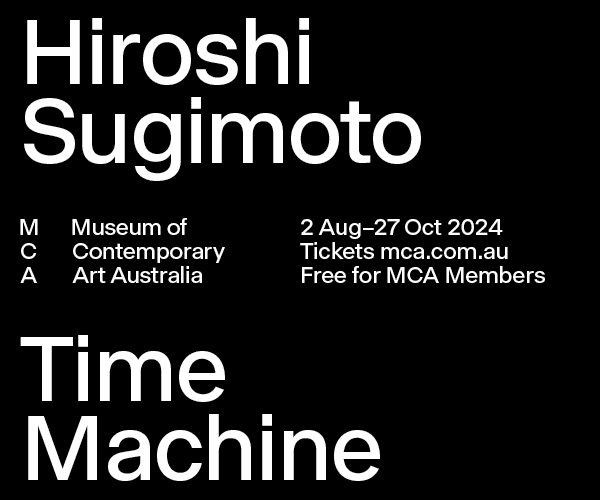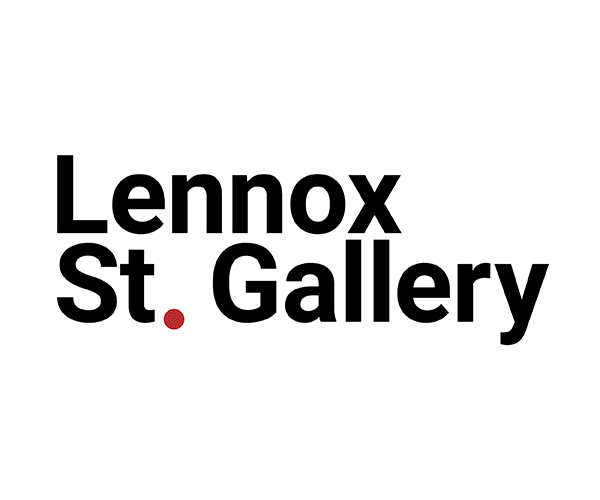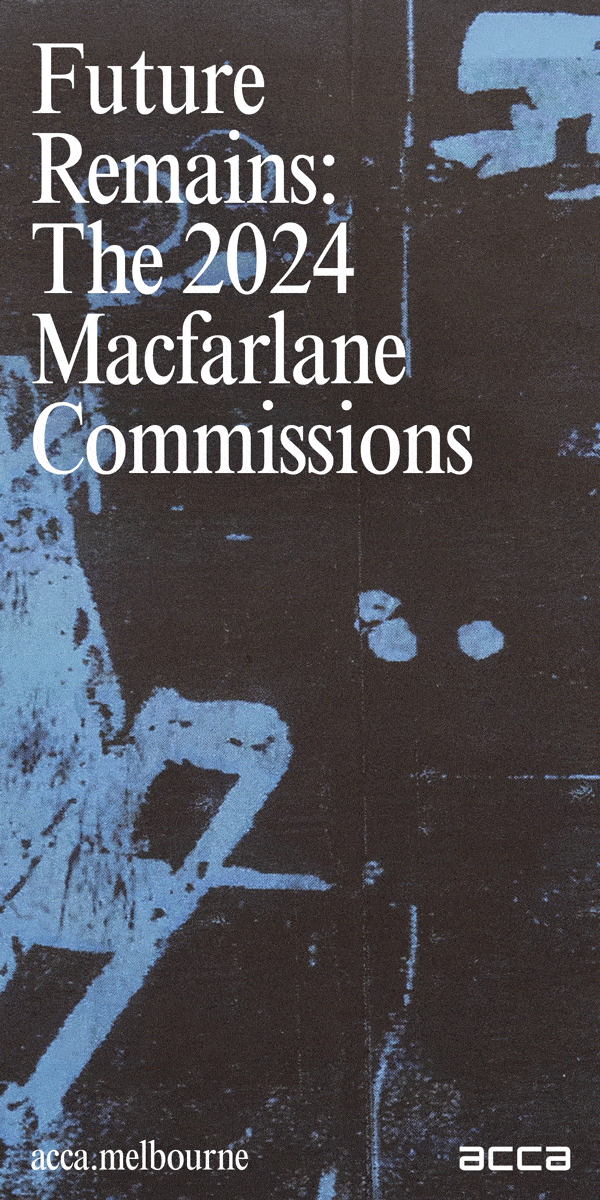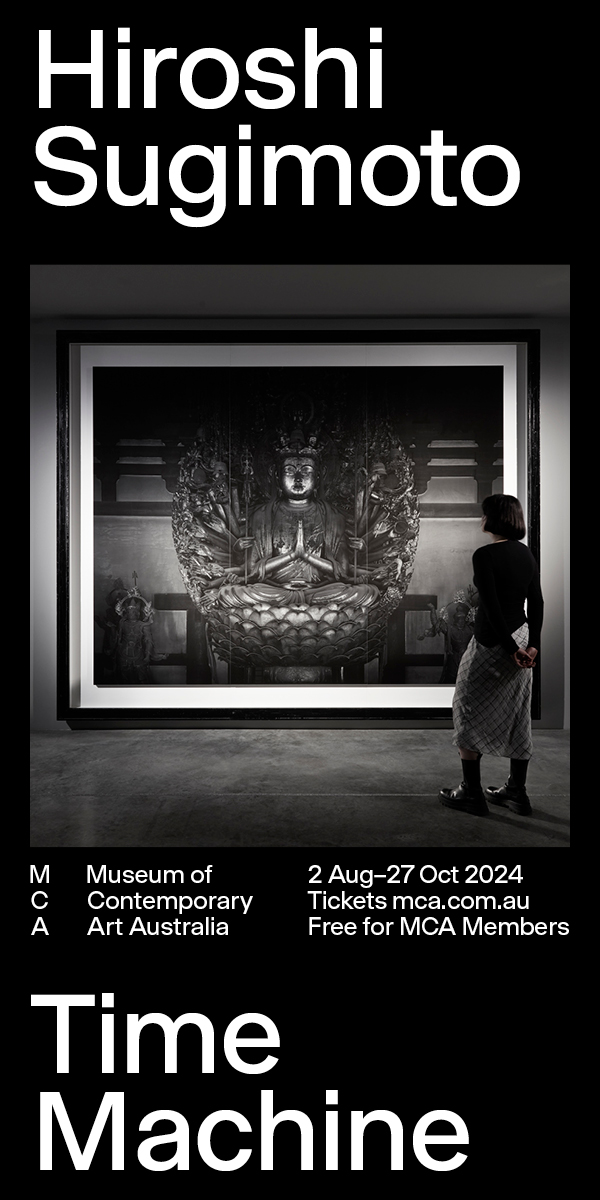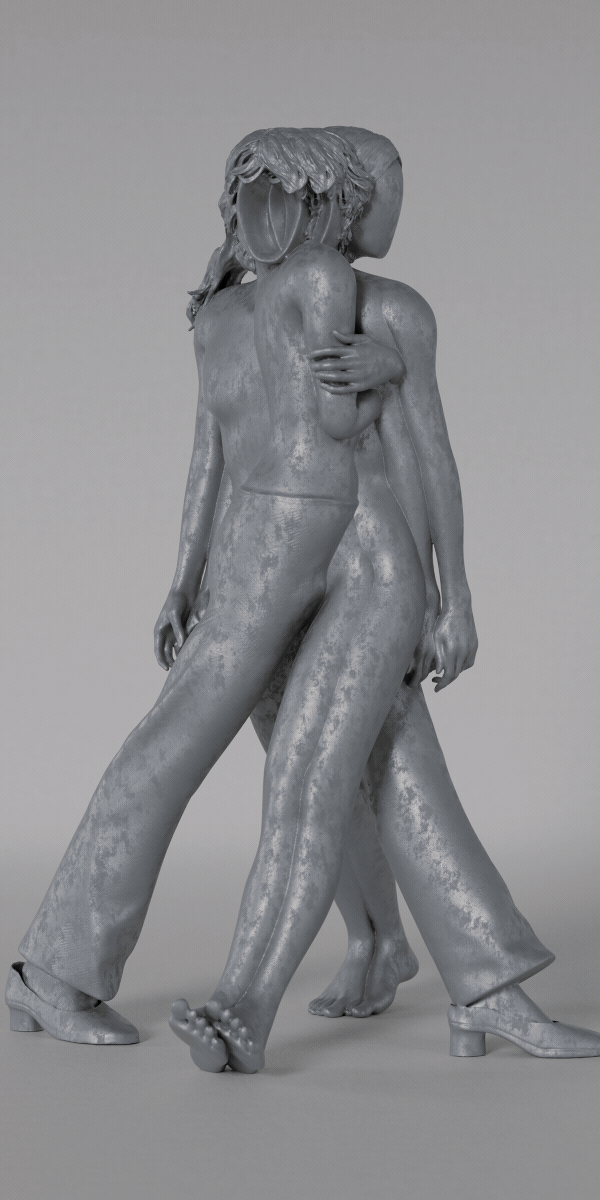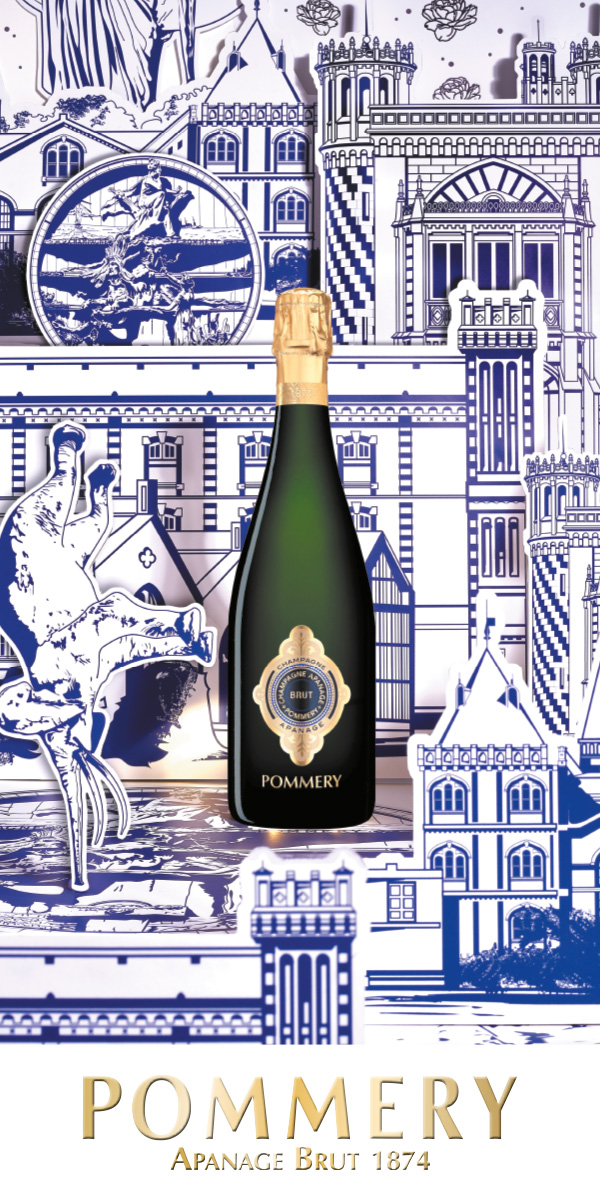Ten Thousand Suns with the Artists: Darrell Sibosado
The 24th Biennale of Sydney, Ten Thousand Suns, closed on Monday 10 June after a three-month run beginning 9 March. VAULT spoke to some of the artists involved with the Biennale’s visionary partner, Fondation Cartier pour l’art contemporain, through their landmark commissioning of 14 First Nations artists from around the world.
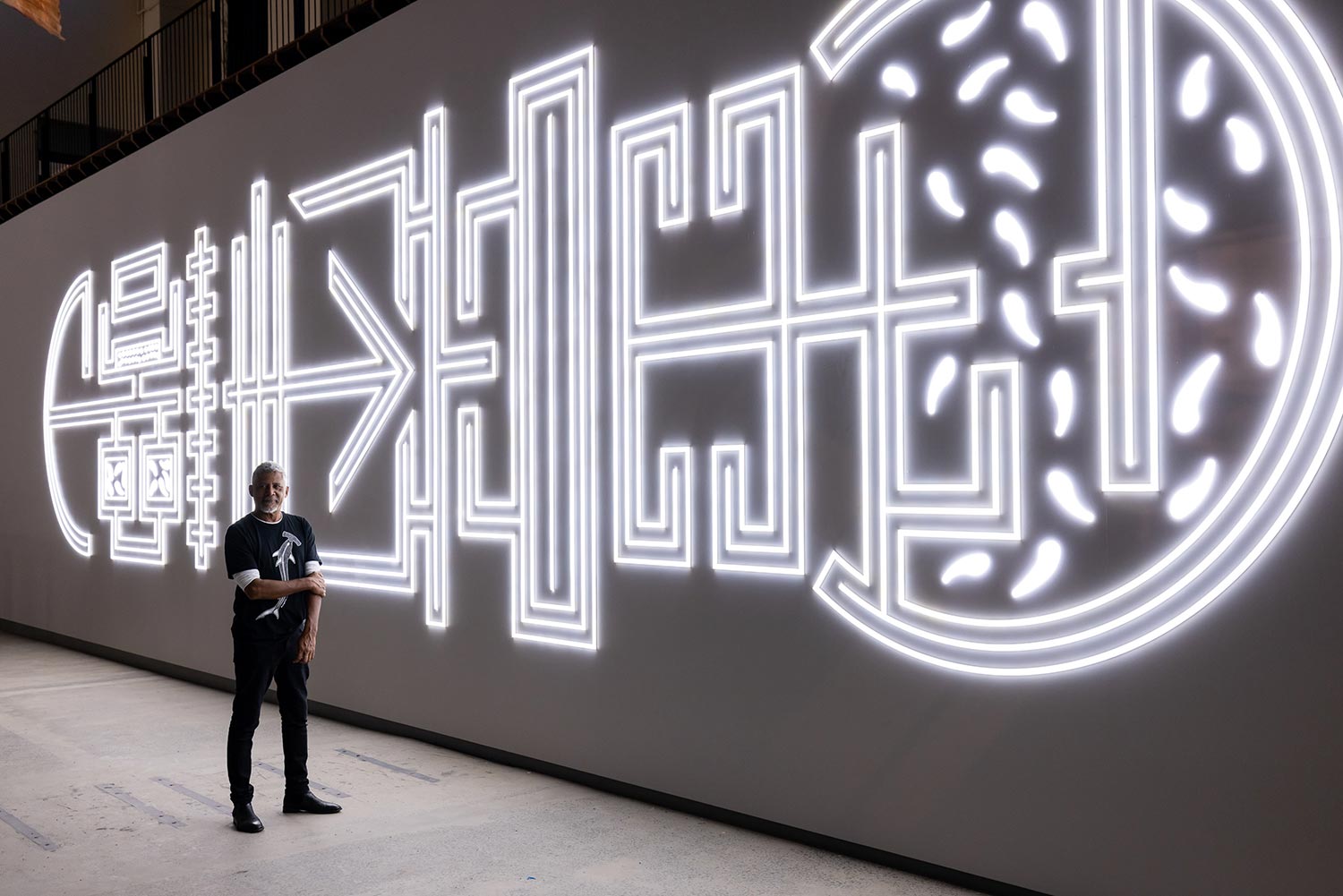
Image credit: Darrell Sibosado, Galalen at Gumiri, 2023, LED light installation, Installation view, Ten Thousand Suns, 24th Biennale of Sydney, White Bay Power Station. Photo: Daniel Boud. Courtesy the artist and N.Smith Gallery, Sydney
Alison Kubler:
How are you, Daryl?
Thank you so much for taking the time to speak. Congratulations, too, on the Biennale of Sydney.
Darrell Sibosado:
Cheers, thank you.
AK:
What does it mean to be in an exhibition of this scale?
DS:
It's an acknowledgement. We all doubt ourselves, so for me, it just gives a bit of validation.
It's such an important show to be a part of, so I'm really honoured and surprised I was chosen. It was really a moment that made you realise that you may deserve it; otherwise, you wouldn't be in there.
AK:
Please tell us a little bit about the work that you have made for the Biennale.
DS:
It's a contemporary representation of my people's history, my clan. It's about one of our most significant ancestors and his story.
AK:
You're taking something quite intimate, this story told on these pearl shells. Could you talk a little bit about those original pearl shell works and what influences you?
DS:
My work is basically exactly the same as the traditional designs that have been passed down my family line. But these are now my versions of those stories.
My people, the Bard people, have always had this relationship with pearl shells. It's a spiritual connection for us.
The pearl shell represents the scales of the Serpent that he sheds. And when he sheds them, all the lore and everything is already there. We collect them off the reef and reveal the lore, whatever message is passing to us.
We were taught by one of the most significant lawmen here, one of my uncles, who passed those symbols on to me and my brothers. And now I've been taking it on advice from other lawmen, who advised me and told me that I am allowed to create new stories.
I keep referring to them as contemporary works, which they are because they're not specific riji. Once we carve the design onto the shell, it becomes riji, which is like a ceremonial plate.
What I'm doing [in my art practice] isn't creating Fiji; I don't etch this sort of design onto the shell. I etch other things onto the shell, which I still do because that's our thing. But there were two different reasons why I do what I do.
One of them is to try and maintain this traditional practice and make sure it's being kept—our connection with shell and everything. All over the world, we're finding it difficult with younger people. But one of the things my brothers and I do is to try to bring sons and nephews and everyone in to start teaching them and to make them understand that you have to maintain this connection with Mother of Pearl.
The other side of it was to just really introduce or expose a whole different visual language that people weren't aware of because the only time you would ever see it was on these carved pearl shells. The only time you would see it were as riji in that form, and they were mostly in museums. So, for me it was about trying to make it a bit more accessible, adding to many voices out there, and trying to show a different way of seeing.
AK:
They have a calligraphic or hieroglyphic quality, don't they?
DS:
Yes, but our uncles' training taught us to start looking [in] a different way, so now it's natural for me.
AK:
It's almost like you're learning as you're going now; it's just the way that you see and speak artistically.
DS:
It's about learning a whole different language, and it's not so much about interpreting, presenting, or representing. It's about seeing and training yourself to look.
AK:
It does look so, as you said, abstract. And yet, as you're talking, it's incredibly symbolic, right? It's very symbolic because it's a language.
DS:
The work at the Biennale now, Galalan at Gumiri, is specific and figurative.
There are three different parts. One is Galalan, our ancestor himself, with an image of him in there. Then, two other locations are very significant in his story. They're the bits that would be told in song and dance.
AK:
You're taking this quite performative thing and turning it into something that is an object, which is interesting.
DS:
Yeah, it's a visual representation of it. But in a recognisable style.
AK:
So, you've taken this beautiful, particular and essential law, and you're talking about these beautiful pearl shells and very traditional work. But then you make these pieces in neon! How do you leap from this lovely, organic material like a pearl to something like neon, and why are you doing that?
DS:
My lifelong struggle, I guess—I don't think I'll ever get there—is to try and replicate the Mother of Pearl. It's been wrecking my brain since day one. How can I do it without using Mother of Pearl? I think that's impossible, but I can possibly present its elements.
I started with metal because that was what I'd had in my mind for almost 15 years.
AK:
I've seen those works!
DS:
I was more focused on the ochre we put on the Mother of Pearl, with the way we etched the design and then put ochre in it to bring it out. So, that was the most obvious thing to do: take that and try to replicate the ochre. That's why I started with Corten Steel.
Then I started thinking about how I could make the work reflect, maybe with light or something. I always say that I prefer Mother of Pearl over pearls. To me, pearls were just too perfect, and the thing I love about Mother of Pearl is the depth.
And they reflect, pearls do the same, they reflect the colours around you, around them.
AK:
Can you tell me what it feels like to have that beautiful engagement from an international organisation like Fondation Cartier with something like the Biennale of Sydney?
DS:
I am so grateful to them, not just for myself but also for the way they've supported the Biennale and the other artists.
In general, most sectors of Australia do not understand its significance. Some people still think, “Get a real job,” when this is a genuine job—and an important one for any community.
As I said before, Cartier's involvement helps to remove some of that doubt.
That's hard for me. I have a full-time job and live in my community, a tiny Aboriginal community in the Kimberley, where I manage our tourism operation.
AK:
Wow, how fascinating.
DS:
We do tours, have a boat, accommodation, and a caravan park that opens tomorrow. And then there are really white beaches.
AK:
I would love to see that. It's even more remarkable that you have a full-time job and are making art.
So, what is next for you then?
DS:
Next is my first solo show with my Sydney gallery, N. Smith. I'm working on that now.
And the following big commission is for the Asia Pacific Triennial at GOMA.
AK:
Yeah, that's so exciting. This engagement from Cartier and the Biennale is an excellent springboard for your work.
DS:
It is.





